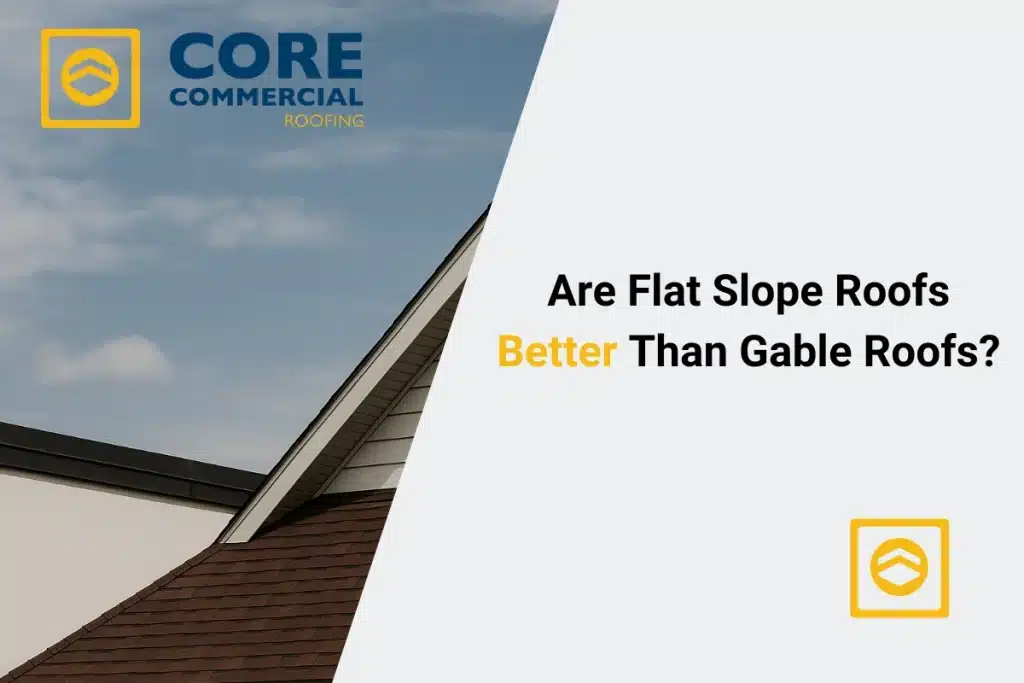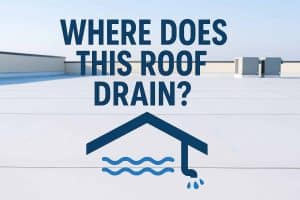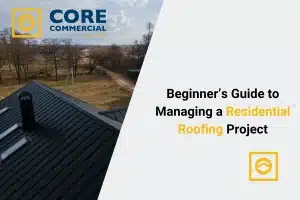Choosing the right type of roof is one of the most crucial decisions homeowners, business owners, and property developers face when building or remodeling their properties. Among the most common types are flat slope roofs (also known simply as flat roofs) and gable roofs (with their iconic triangular shape). But which is better? The answer isn’t simple. It depends on your location, budget, design preferences, long-term maintenance expectations, and more. This article breaks it all down in a simple, easy-to-follow guide that compares flat and gable roofs in detail, focusing on real benefits, everyday challenges, and what matters most to property owners like you.

Table of Contents
What Is a Flat Slope Roof?
A flat slope roof isn’t completely flat—it usually has a slight pitch to allow water to drain, often between 1/4 and 1/2 inch per foot. These roofs are most common in commercial buildings and modern-style homes, especially in cities or areas where roof access is important.
Key Features of Flat Slope Roofs:
- Almost horizontal with minimal pitch
- Common in warm, dry climates
- Often used in modern or industrial architectural designs
- Suitable for rooftop decks, HVAC placement, and solar panels
What Is a Gable Roof?
A gable roof has two sloping sides that form a triangle at each end of the house, called the gables. This is the most familiar roof shape in residential neighborhoods across North America.
Key Features of Gable Roofs:
- Steeply pitched sides that meet at a ridge
- Excellent for shedding water and snow
- Suitable for classic, colonial, or traditional home designs
- Creates attic or vaulted ceiling space underneath
Aesthetics and Architectural Style
Flat Roof Appeal:
Flat roofs give buildings a clean, modern, and minimalistic look. They’re often used in contemporary homes and mid-century modern architecture. They allow for creative use of rooftop space, like patios or gardens.
Gable Roof Appeal:
Gable roofs are timeless and versatile. They fit in almost any neighborhood, especially where traditional or craftsman-style homes dominate. Their pitched shape adds character and charm.
User Tip: If you’re trying to blend in with nearby houses, a gable roof may be the safer choice. If you’re aiming for a sleek, bold statement, a flat roof might better reflect your style.
Weather Resistance and Drainage
Flat Roof Challenges:
Flat roofs don’t drain as quickly as pitched ones. In areas with heavy rainfall or snow, standing water can become a serious issue unless drainage systems (like internal drains, scuppers, or gutters) are properly maintained.
Gable Roof Advantage:
Gable roofs are built for effective water runoff. Their steep pitch allows rain, ice, and snow to slide off easily. This reduces the chance of leaks or water damage over time.
User Tip: If you live in a region with lots of snow or frequent heavy rain, gable roofs are typically more reliable.
Maintenance and Repairs
Flat Roof Maintenance Needs:
Flat roofs require frequent inspections. Pooling water, punctures, and membrane cracks are common issues. They usually use materials like modified bitumen, EPDM rubber, or PVC, which can wear down faster under the sun.
Gable Roof Maintenance Needs:
Gable roofs made with asphalt shingles, metal panels, or tiles tend to last longer and are easier to inspect from the ground. But they can still suffer from shingle loss in storms or leaks along flashing.
User Tip: While gable roofs might cost more to repair after a storm, flat roofs typically demand more regular maintenance year-round.
Usable Space and Practical Functionality
Flat Roof Benefits:
A flat roof is like a bonus floor. You can install solar panels, set up a rooftop garden, or even build a small outdoor seating area. This makes them highly functional in urban areas where space is limited.
Gable Roof Benefits:
Though you can’t walk on them, gable roofs often allow for attic storage or additional living space (like vaulted ceilings or upstairs rooms with dormers).
User Tip: If you value rooftop access or future expansion, a flat roof opens more options.
Installation Costs and Lifespan
Flat Roof Costs:
Generally, flat roofs cost less to install because they require fewer materials and are faster to build. However, because of higher maintenance and shorter lifespan, long-term costs may rise.
Gable Roof Costs:
Gable roofs are typically more expensive up front, especially with complex framing and extra materials. But they usually last longer—25 years or more with proper upkeep.
Cost Comparison (Estimates):
| Roof Type | Avg. Install Cost (per sq. ft.) | Lifespan |
|---|---|---|
| Flat Roof | $4 – $8 | 10 – 20 years |
| Gable Roof | $6 – $12 | 20 – 40+ years |
User Tip: Consider total cost of ownership, not just installation. Gable roofs may offer better value in the long run.
Energy Efficiency and Insulation
Flat Roof Energy Use:
Flat roofs are easier to insulate from the top with rigid foam boards or reflective materials. This helps reduce heat gain in hot climates. However, poor insulation or aging membranes can make them less efficient.
Gable Roof Energy Use:
The attic space under a gable roof acts as a thermal buffer. Proper ventilation and attic insulation can keep homes cooler in summer and warmer in winter, improving overall efficiency.
User Tip: In hot southern climates, flat roofs with reflective coatings work well. In colder or variable climates, gable roofs with attic insulation may be more energy-smart.
Which Roof Type Works Best in Snowy, Windy, or Rainy Areas?
- Snowy Areas: Gable roofs win. The steep slope allows snow to slide off before it becomes too heavy. Flat roofs risk collapse if snow piles up.
- Windy Areas: Gable roofs can suffer wind uplift at the gable ends. Reinforced trusses or hip roofs may be better. Flat roofs offer less surface area for wind to grab, but can be vulnerable at the membrane edges.
- Rainy Areas: Gable roofs shine due to rapid runoff. Flat roofs must have excellent drainage or risk leaks and damage.
User Tip: Always consider your local weather patterns before choosing your roof.
Local Building Codes and HOA Restrictions
Before installing a flat or gable roof, check local building codes and homeowners association (HOA) rules. Some communities restrict roof types to maintain a uniform appearance. Others require roofs to meet snow load or wind resistance standards.
User Tip: Call your local building department or consult with a local roofing contractor to avoid fines or costly remodels.
Resale Value and Market Appeal
Flat Roof Resale Factors:
Buyers might view flat roofs as modern but risky if they’re unfamiliar with maintenance needs. In areas with lots of rain or snow, some buyers may be hesitant.
Gable Roof Resale Factors:
Gable roofs are widely accepted and seen as “safer” by traditional buyers. They often make homes more attractive to a broader audience.
User Tip: If you plan to sell within 5–10 years, think about what’s most common in your area to attract more buyers.
Flat vs Gable: Which Roof Is Right for You?
Choose a Flat Roof If:
- You want a modern or minimalist look
- Your home is in a dry, warm climate
- You need rooftop space for solar panels, HVAC, or a deck
- You have a tight budget and can handle more maintenance
Choose a Gable Roof If:
- You live in a rainy or snowy area
- You want long-term durability and fewer frequent repairs
- You prefer classic or traditional home designs
- You want attic space or future living area expansions
Final Thoughts
Flat slope roofs and gable roofs both have their place in modern construction. Neither is universally “better.” The right choice depends on your climate, budget, maintenance comfort level, and how you plan to use your space.
Flat roofs provide functional rooftop space and a sleek appearance, making them ideal for sunny cities and modern homes. Gable roofs are reliable, low-maintenance, and weather-resistant—ideal for four-season environments and traditional designs.
Always think long-term. A roof isn’t just something to cover your home—it protects your investment, shapes your home’s character, and affects your daily comfort and utility bills. Choose wisely.
FAQs
Flat roof pros vs gable roof for rooftop deck?
Flat roofs let you use your roof as extra space – think deck, garden, or solar panels. Gable roofs don’t offer that. But flat ones need good drainage and more upkeep to avoid leaks around drains and membranes.
Which roof drains water best in heavy rain?
Gable roofs are best for shedding water quickly because of their steep slope. Flat roofs must be built with a subtle pitch and drains; otherwise, water pools and causes leaks.
Is a flat roof cheaper than a gable roof?
Yes, flat roofs cost less to install due to their simpler structure and fewer materials. But they often need more repairs and don’t last as long, which can slow real savings.
Will snow damage a flat roof in winter?
Heavy snow on flat roofs can cause leaks or collapse if not drained off. Gable roofs shed snow naturally, thanks to their steep angle, safer in snowy regions.
How long do flat vs gable roofs last?
Flat roofs generally last 10–20 years, depending on materials and care. Gable roofs often last 20–40+ years with regular maintenance, thanks to better water runoff.
Are gable roofs better for attic space?
Yes. Gable roofs create triangular attic space, which can be used for storage, insulation, or even a bonus room. Flat roofs have no attic.
Which roof is better for solar panels?
Flat roofs are ideal for solar panels because you can place panels flat and adjust angles freely. Gable roofs work too, but each side faces only one direction.
Do flat roofs increase home cooling costs?
Flat roofs can be energy-efficient if insulated and coated with reflective material. But without it, they soak up heat. Proper insulation is key.
Which roof type suits storm‑prone areas?
In areas with heavy storms or hurricanes, gable roofs handle rain better, but wind can get under gable ends. Flat roofs resist uplift but need strong seals.
Can I convert a flat roof into a rooftop garden?
Yes! Many flat roofs support rooftop gardens, but only with proper waterproofing, load support, and drainage systems in place.






